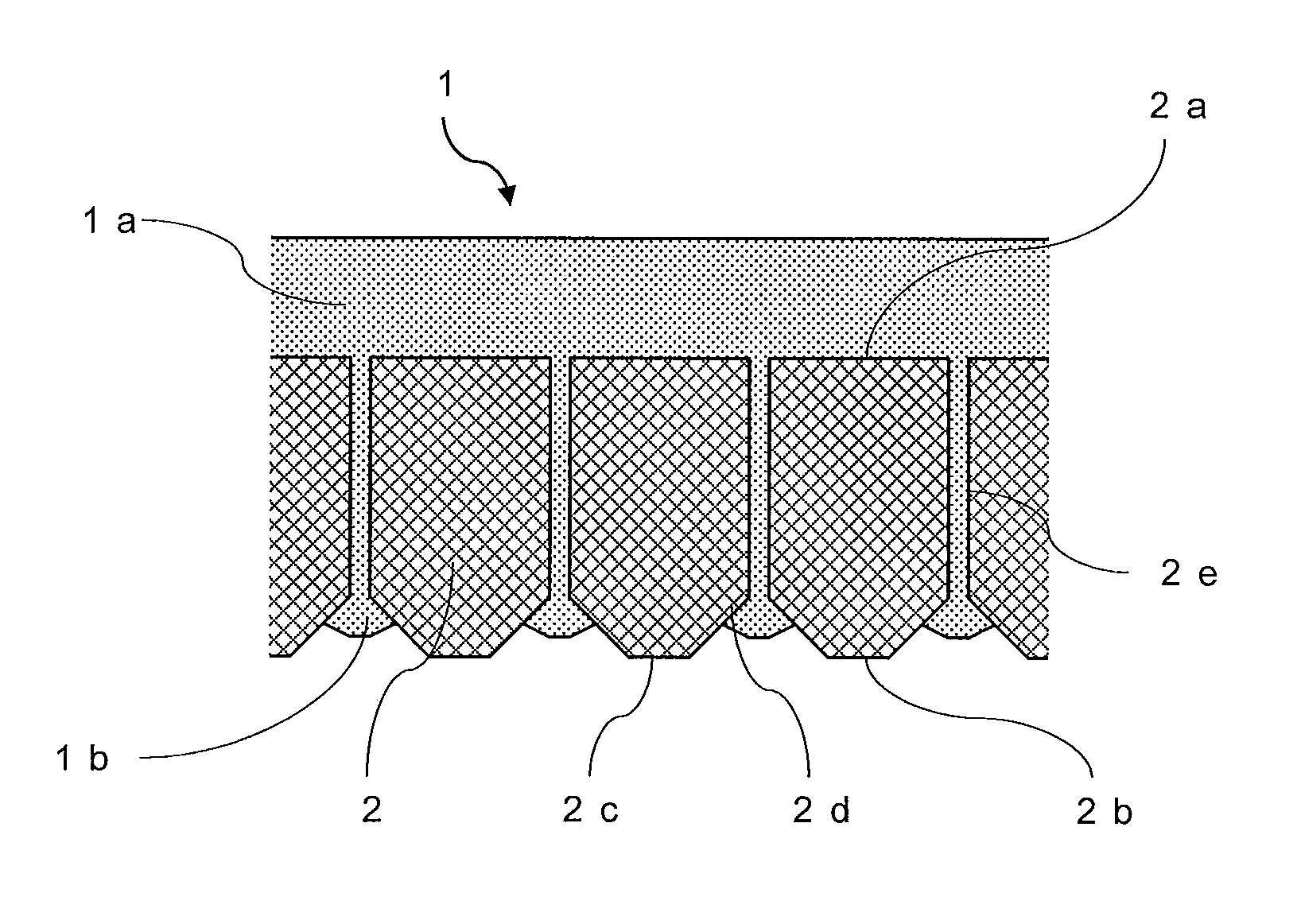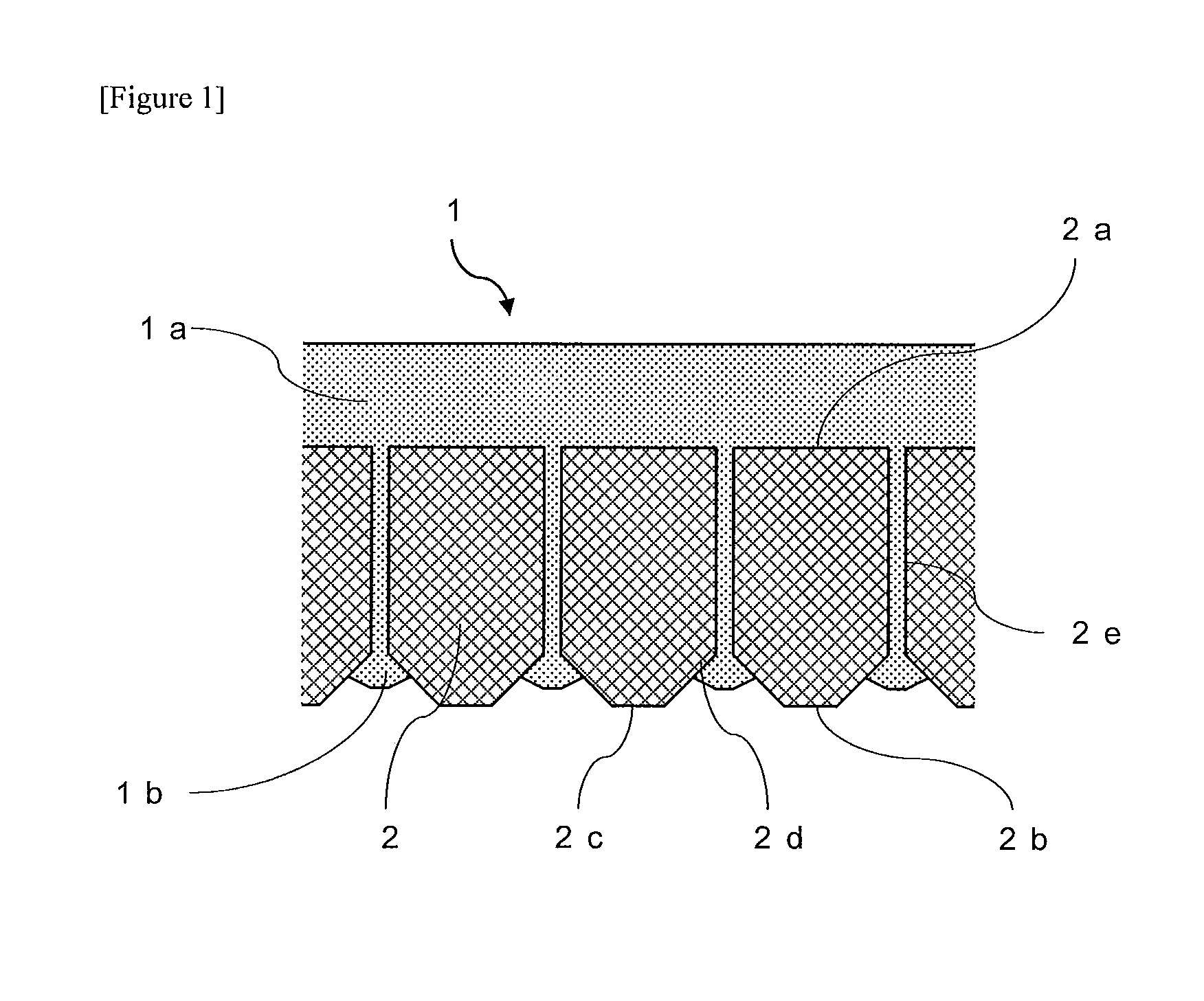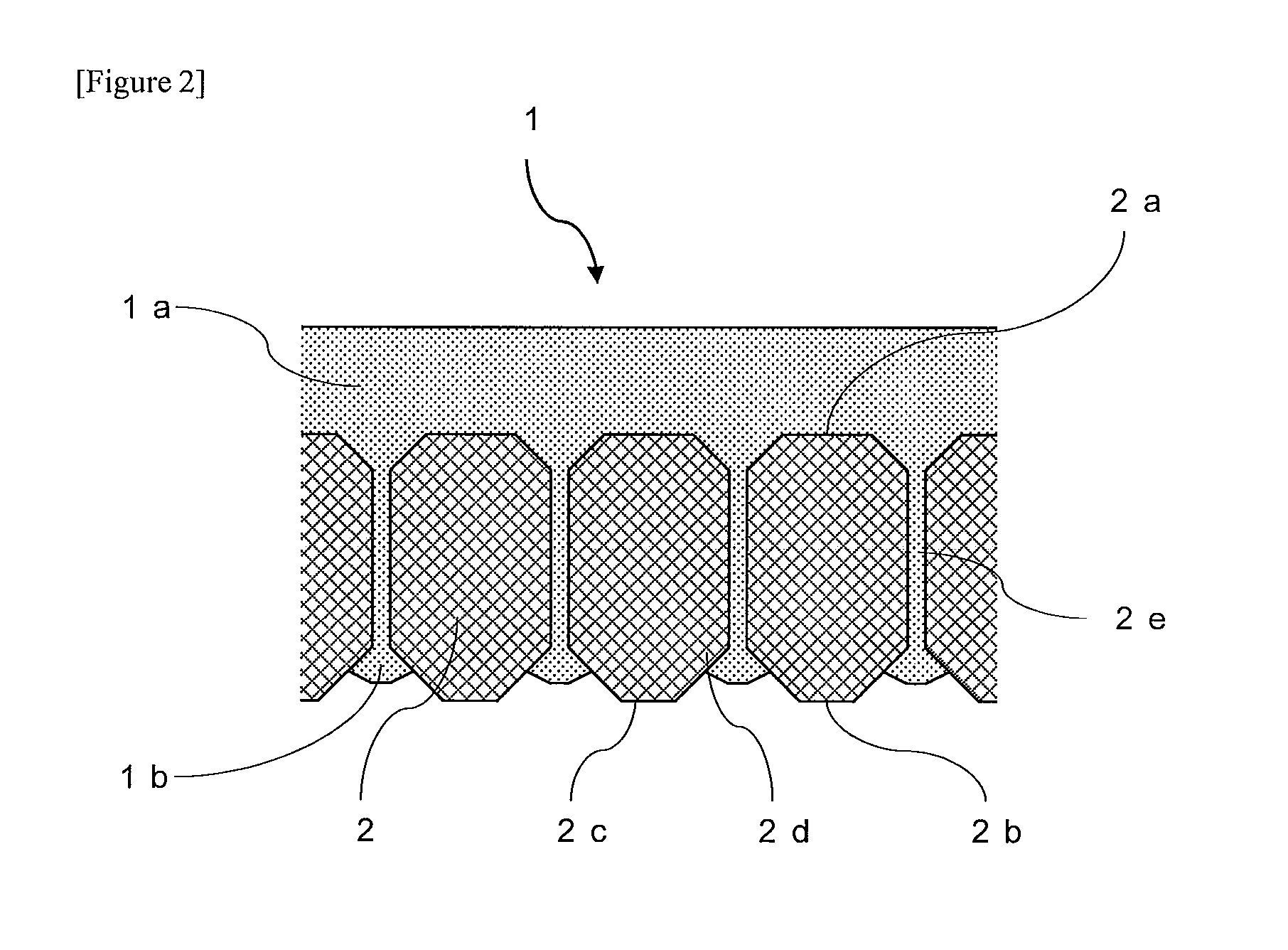Composite semipermeable membrane and method for producing same
a semi-permeable membrane and semi-permeable technology, applied in the direction of membranes, filtration separation, separation processes, etc., can solve the problems of membrane performance, achieve solute removal performance, and achieve high solvent resistance. , the effect of high water permeation performan
- Summary
- Abstract
- Description
- Claims
- Application Information
AI Technical Summary
Benefits of technology
Problems solved by technology
Method used
Image
Examples
reference example 1
[0105]A fabric-reinforced polysulfone support membrane (ultrafiltration membrane) which is a porous support membrane was produced by the following method. Specifically, a wet nonwoven fabric having an air permeability of 0.7 cm3 / cm2 / sec, an average pore size of 7 μm or less, and a size of 30 cm long and 20 cm wide was fixed onto a glass plate, the wet nonwoven fabric being made of a mixed fiber of polyester fibers with a single yarn fineness of 0.5 decitex and of 1.5 decitex and being a polyester nonwoven fabric (basis weight: 65 g / m2, thickness: 72 μm, width: 250 mm, smoothness on the front-side surface: 10 s, and smoothness on the back-side surface: 5 s) controlled, when calendered, such that the average density in the front-side region was 69% and that the average density in the back-side region was 45%, that is, that the average density in the back-side region was 66% of the average density in the front-side region by setting the temperature of the roll at the back side at lower...
reference example 2
[0107]The composite semipermeable membrane obtained in Reference Example 1 was immersed in a 10% aqueous isopropyl alcohol solution for 60 minutes at room temperature to wash off the excess reaction residue. The amount of m-phenylenediamine in the composite semipermeable membrane obtained was 4.8 mg / m2.
reference example 3
[0108]A composite semipermeable membrane was obtained in the same manner as in Reference Example 1 except using a wet nonwoven fabric having an air permeability of 0.7 cm3 / cm2 / sec, an average pore size of 7 μm or less, and a size of 30 cm long and 20 cm wide, the wet nonwoven fabric being a polyester nonwoven fabric with a smooth back side (basis weight: 65 g / m2, thickness: 72 μm, and width: 250 mm) controlled, when calendered, such that the average density in the front-side region was 45% and that the average density in the back-side region was 69%, that is, that the average density in the back-side region was 152% of the average density in the front-side region by setting the temperature of the roll at the back side at higher than that of the roll at the front side. The composite semipermeable membrane obtained had a permeate flow rate of 0.78 m3 / m2 / day, a salt removal rate of 99.7%, and a boron removal rate of 88.9%.
PUM
| Property | Measurement | Unit |
|---|---|---|
| optical transmittance | aaaaa | aaaaa |
| size | aaaaa | aaaaa |
| thickness | aaaaa | aaaaa |
Abstract
Description
Claims
Application Information
 Login to View More
Login to View More - R&D
- Intellectual Property
- Life Sciences
- Materials
- Tech Scout
- Unparalleled Data Quality
- Higher Quality Content
- 60% Fewer Hallucinations
Browse by: Latest US Patents, China's latest patents, Technical Efficacy Thesaurus, Application Domain, Technology Topic, Popular Technical Reports.
© 2025 PatSnap. All rights reserved.Legal|Privacy policy|Modern Slavery Act Transparency Statement|Sitemap|About US| Contact US: help@patsnap.com



